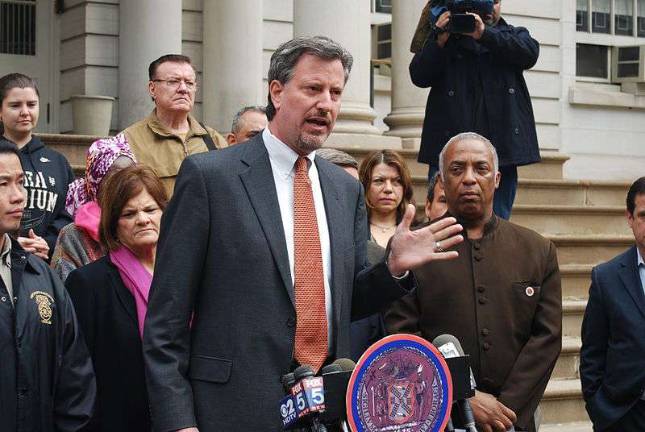Stop School Closures

The public advocate calls on the administration to find alternate solutions for struggling schools By Public Advocate Bill de Blasio If something is broken ? fix it. Sadly, Mayor Bloomberg adheres to a different philosophy where our city's education system is concerned. The Administration's default response to struggling schools has been to close them, without first investing enough time and resources into turning them around. And instead of laying out a thoughtful plan for multiple schools to share facilities in the same building when they "co-locate," the Administration turns a cold shoulder to community input. Clearly, we need a new approach for our city's one million students. There is a time and place to close a troubled school. But that should not be treated as an end goal in itself, nor an accomplishment to boast about. When all other options are exhausted, it should be the last resort. In 2011, the Department of Education (DOE) proposed for Canarsie's P.S. 114 to be phased out. Yet the unwavering voices of students, parents and teachers of P.S. 114 were eventually heard, and the DOE resolved to work on lifting the school back up. Collaborating with community members like this ? and really listening ? should serve as a prerequisite for potential school closings. Too many of the schools doomed for closure have not been given the tools to improve, or the time to apply them. Students at low-performing schools need the most support. But the Administration constantly misses the opportunity to pinpoint troubled schools, invest in them and turn them around. Too often, the Administration opts for the easier route, which is ultimately school closure. DOE's policies have actually amplified the core problems that contribute to chronic poor performance. Adding more high-need students to poorly resourced and already underperforming schools is just one example. The end result? Performance results for our highest-need students have hardly budged, and educational disparity continues to besiege our city. We see the same heavy-handedness in the way the City often shoehorns charter schools into existing public schools, without a well-considered strategy for both institutions to thrive. Co-location can be ? and has been ? successful in this city. Students at four high schools in the Brandeis Educational Complex, on the Upper West Side, learned beautifully side-by-side ? until the DOE squeezed a charter elementary school into the building, despite staunch resistance from the school community. Successful sharing of space and resources can only be carried out through meticulous planning and input from all key stakeholders ? students, parents, teachers, administrators, community activists and education advocates. Instead, the DOE has alienated school communities by neglecting their input and depriving them of a venue for meaningful engagement on educational policy. As a public school parent, I know the difference of being involved in your children's education can make in their academic success and self-confidence. That's personal to me, and that priority is reflected in the recommendations my office put forth in 2010 to modify Educational Impact Statements and boost parental engagement. But the Administration failed to take our recommendations on community involvement and use of physical space seriously, resulting in a co-location process that is consistently divisive and poorly attuned to the physical demands of mutually-sited school communities. That's why, following Mayor Bloomberg's latest announcement on school closures, I called on the Administration to freeze school closures and co-locations for the rest of the Mayor's term. Until we can offer a comprehensive, community-driven plan for co-locations and school turnaround, I urge you to join me in pressuring the mayor to put a one-year moratorium on these divisive tactics. After years of disruption instead of progress, inequity instead of opportunity, haste instead of prudence. Enough is enough.